Properties of wood veneer
- Types of wood
- Growth features
- Color of wood
- Structure of wood
- Sustainability
- Fire safety
- Sound insulation
- Moisture resistance
- Electrical conductivity
The best types of wood for veneer
Almost all types (species) of wood are suitable for the production of veneer. We have put together photos of the most attractive and most commonly used for you. Click one of the wood species, to see an enlargement and details.
Our thanks go to Kohl GmbH & Co. KG providing the photos.
Our thanks go to Kohl GmbH & Co. KG providing the photos.

Tulipier
An overview of growth features
Each tree and each wood species has individual features, such as special figures, small knotholes or interesting discolorations.
These growth features are typical for real wood and make an important contribution to the character of a veneered piece of furniture. In some cases, customers erroneously think that growth features are defects.
These growth features are typical for real wood and make an important contribution to the character of a veneered piece of furniture. In some cases, customers erroneously think that growth features are defects.
Discolorations: dark, mostly due to water drops that condensate on iron parts (iron tannate staining), where not growth-induced.
Can be found in: European Maple, American Maple, Birch, Beech, European Oak, Alder, Ash, Pine, European Cherry, Mahogany, European Walnut, Wengé.
Can be found in: European Maple, American Maple, Birch, Beech, European Oak, Alder, Ash, Pine, European Cherry, Mahogany, European Walnut, Wengé.
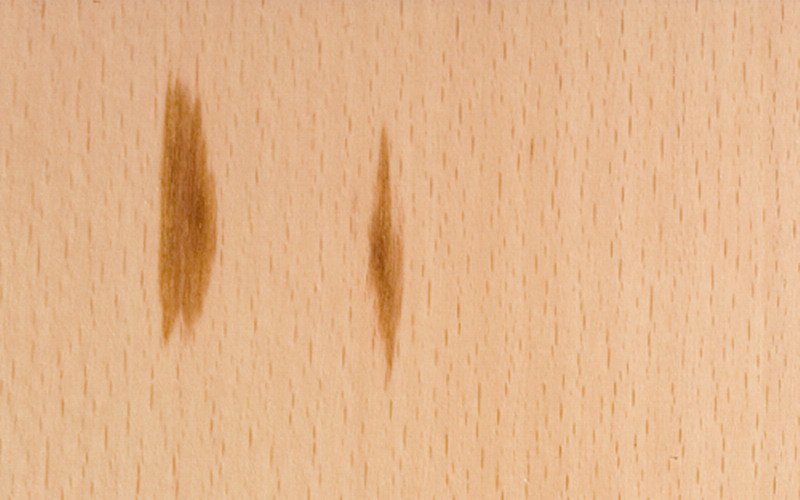
Burls (burrs): : small, round or oval buds.
Can be found in: American Maple, European Maple, Birch, Beech, European Oak, Alder, Ash, American Cherry, European Cherry, Mahogany, American Walnut, European Walnut, Teak, Zebrano.
Can be found in: American Maple, European Maple, Birch, Beech, European Oak, Alder, Ash, American Cherry, European Cherry, Mahogany, American Walnut, European Walnut, Teak, Zebrano.
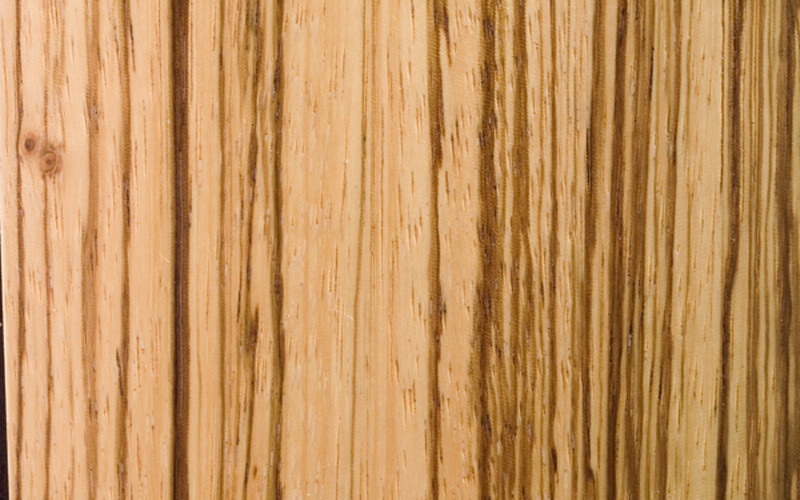
Gum: These are small black dots or stria between the annual rings, which are caused by resin inclusion.
Can be found in: American Cherry.
Can be found in: American Cherry.

Fiddleback (wavy figure): are rays or stria running across the grain at a uniform distance. Spread across the entire log, sometimes also wavy.
Can be found in: European Maple, Beech, Ash, Cherry, Mahogany, American Walnut, European Walnut, Teak.
Can be found in: European Maple, Beech, Ash, Cherry, Mahogany, American Walnut, European Walnut, Teak.

Flashes: stria and rays running across the direction of growth.
Can be found in: American Maple, European Maple, European Oak, Ash, Cherry, Mahogany, American Walnut, Teak, Zebrano.
Can be found in: American Maple, European Maple, European Oak, Ash, Cherry, Mahogany, American Walnut, Teak, Zebrano.

Silver figure (flake): light-coloured, slightly iridescent dots, caused by cutting across wood (xylem) rays.
To be found in: Maple, Beech, European Oak, American Cherry.
To be found in: Maple, Beech, European Oak, American Cherry.

Blisters: light-coloured round or oval areas.
To be found in: American Maple, Ash, Mahogany.
To be found in: American Maple, Ash, Mahogany.

Resin pockets: often dark dots and stria, which run along the annual rings, caused by resin deposits.
To be found in: Spruce, Pine, Zebrano.
To be found in: Spruce, Pine, Zebrano.

Whether or the growth feature that occurs is a defect or error can be decided by a sworn industrial expert.
Download more on checking for defects
Download more on checking for defects
Color of the wood
Modern or classic? Elegant or youthful? It is not only the furniture design that's important, but also the wood species. Because each has its very own appeal.
Light-coloured: Maple, Birch, Ash and Alder
Furniture and floorings made from light-coloured veneer are friendly and modern. Interesting combinations result with metal, dark or stained timbers.
Furniture and floorings made from light-coloured veneer are friendly and modern. Interesting combinations result with metal, dark or stained timbers.
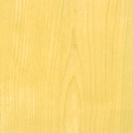
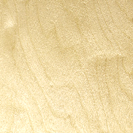
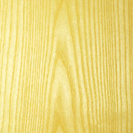

Reddish: Beech, Cherry, Wild Service Tree and Mahogany
The warm colour ensures a pleasant, calm atmosphere and lends furniture character. Beech is one of the most commonly used wood species for furniture and floors. Cherry and Mahogany are popular high-grade timbers for high-quality, expensive pieces of furniture.
The warm colour ensures a pleasant, calm atmosphere and lends furniture character. Beech is one of the most commonly used wood species for furniture and floors. Cherry and Mahogany are popular high-grade timbers for high-quality, expensive pieces of furniture.


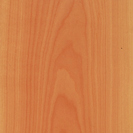

Brown: Oak, Teak and Walnut
Furniture and floorings made of brown timbers have a discreetly elegant and classical effect. They combine well with all colours and materials. A lot of farmhouse style furniture is made of Oak.
Furniture and floorings made of brown timbers have a discreetly elegant and classical effect. They combine well with all colours and materials. A lot of farmhouse style furniture is made of Oak.

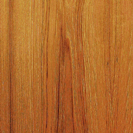
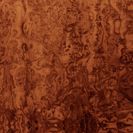
Dark: Wenge, Bog Oak and Macassar
The noble charm of dark timbers make them particularly desirable. Walnut and Wenge are mainly suitable for high-quality, elegant furniture.
The noble charm of dark timbers make them particularly desirable. Walnut and Wenge are mainly suitable for high-quality, elegant furniture.



Wood structure: It's the type of cut that matters
Different patterned veneers are produced depending on how the tree trunk (log) is cut during processing. When the trunk is cut longitudinally (ripped) through the middle the annual rings appear as virtually parallel stripes. The so-called flat cut (tangential cut, back cut) produces, for example, a "figured" crown (cathedral) appearance.
The following slicing and cutting techniques are used today:
- Rotary peeling
- Eccentric half-round peeling
- Flat-cut slicing
- True quarter slicing
- Rift peeling
- Quarter cut, figured
- Sliced false quarter
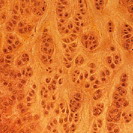
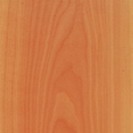




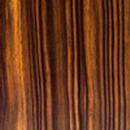
Sustainability
"Sustainability" - this keyword has recently become a very in word in many areas for companies and others who want to give themselves a clear image with regard to the environment. What is considered here to be a new topic has always been actively practiced by veneering companies: responsible handling of the environment. The German veneer industry considers itself to be responsible for the renewable raw material wood and for environmentally compatible wood harvesting on the basis of sustainable forestry.
Here the issues are not only the limited availability of raw materials or the impact of pollutants on the environment. Responsible handling of nature begins with the use of wood. Veneer is an extremely economic form of wood use: Around 300 sqm of furniture surfaces can be covered with the veneer from a tree trunk or log that is 2.40 m long and 0.50 m in diameter. In addition, virtually all the trunk parts produced during the wood harvesting are used in the substrates of veneer. The wood is therefore used optimally and (not only) perfectly in the interests of sustainability.
Here the issues are not only the limited availability of raw materials or the impact of pollutants on the environment. Responsible handling of nature begins with the use of wood. Veneer is an extremely economic form of wood use: Around 300 sqm of furniture surfaces can be covered with the veneer from a tree trunk or log that is 2.40 m long and 0.50 m in diameter. In addition, virtually all the trunk parts produced during the wood harvesting are used in the substrates of veneer. The wood is therefore used optimally and (not only) perfectly in the interests of sustainability.

Fire safety
Worldwide, buildings are becoming increasingly larger and higher. This means that use of the buildings is also increasing and accordingly, the fire safety standards too. In general, special substrates are used, if requirements exist with regard to the fire load.
Intumescent varnishes can be used for the surface treatment. They slow down the penetration of oxygen into the wood and prevent ignition or kindling. It is also possible to impregnate the veneer with salt-containing flame retardants (e.g. ammonium phosphate), in order to fulfil the fire safety requirements.
Complete solutions are also available for interiorwork: decorative, non-flammable, veneered fire protection boards, which can be used for covering walls and ceilings, panels, wall-to-wall cupboards or fire doors. Flame resistant formed wood that conforms to construction material class B1 is already used to produce shaped moulded seats of chairs and can be produced using high-grade wood veneers as the top or outer layer.
Intumescent varnishes can be used for the surface treatment. They slow down the penetration of oxygen into the wood and prevent ignition or kindling. It is also possible to impregnate the veneer with salt-containing flame retardants (e.g. ammonium phosphate), in order to fulfil the fire safety requirements.
Complete solutions are also available for interiorwork: decorative, non-flammable, veneered fire protection boards, which can be used for covering walls and ceilings, panels, wall-to-wall cupboards or fire doors. Flame resistant formed wood that conforms to construction material class B1 is already used to produce shaped moulded seats of chairs and can be produced using high-grade wood veneers as the top or outer layer.

Sound insulation
Due to its small thickness, veneer has little effect on the acoustic properties of a component or structural element and can therefore makes hardly any contribution to sound insulation. In general, if such requirements exist, drillholes or slots / chasing are made, distributed over the entire area, to increase the degree of absorption.
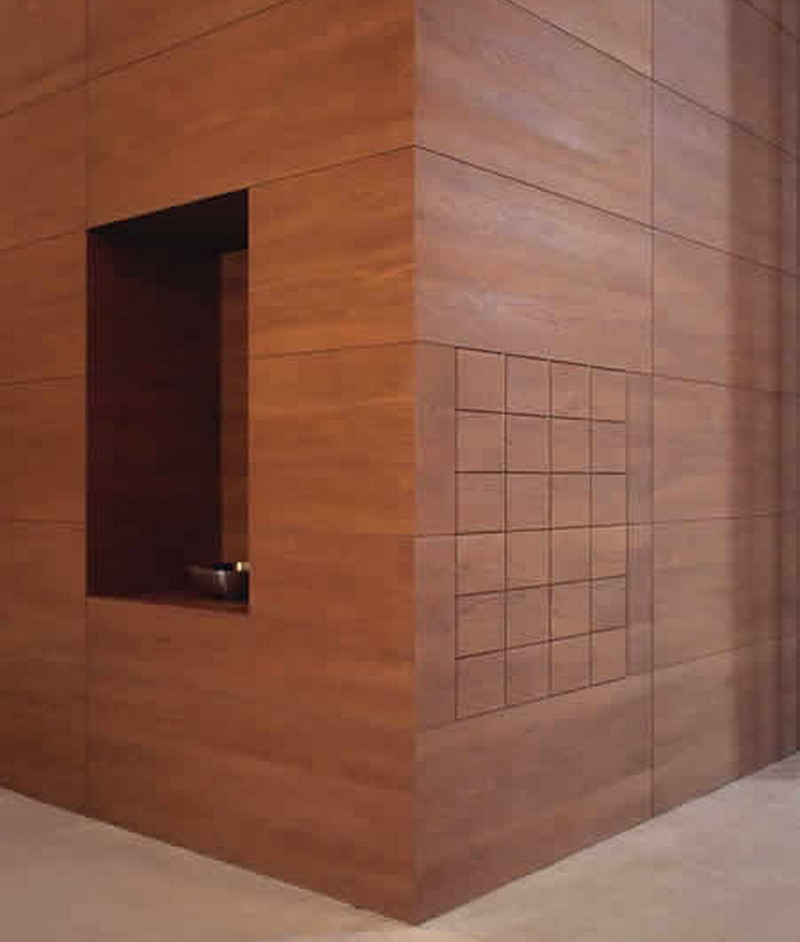
Moisture resistance
In interiors, veneer is exposed to moisture in special cases only. However, for outdoor areas, options have already been developed for improving the moisture and therefore the dimensional stability of materials made from veneer.
On the one hand, veneer can be treated with a solution, which causes cross-linking of the cellulose fibres. The subsequent pressing to produce laminated formed wood, creates a permanently moisture resistant moulded part. On the other hand, thermally treated veneer can be used to produce these laminated formed woods.
On the one hand, veneer can be treated with a solution, which causes cross-linking of the cellulose fibres. The subsequent pressing to produce laminated formed wood, creates a permanently moisture resistant moulded part. On the other hand, thermally treated veneer can be used to produce these laminated formed woods.

Electrical conductivity
The right surface treatment should be chosen, to ensure people's hair doesn't stand on end when they tread on wooden floorings. This is because it affects electrostatic performance. For example, wooden floorings treated with oil or wax are generally antistatic and therefore avoid the build-up of higher electrostatic charges. One exception is UV cured oils. Lacquered wood surfaces also charge somewhat higher if no measures are taken to reduce the charge.

